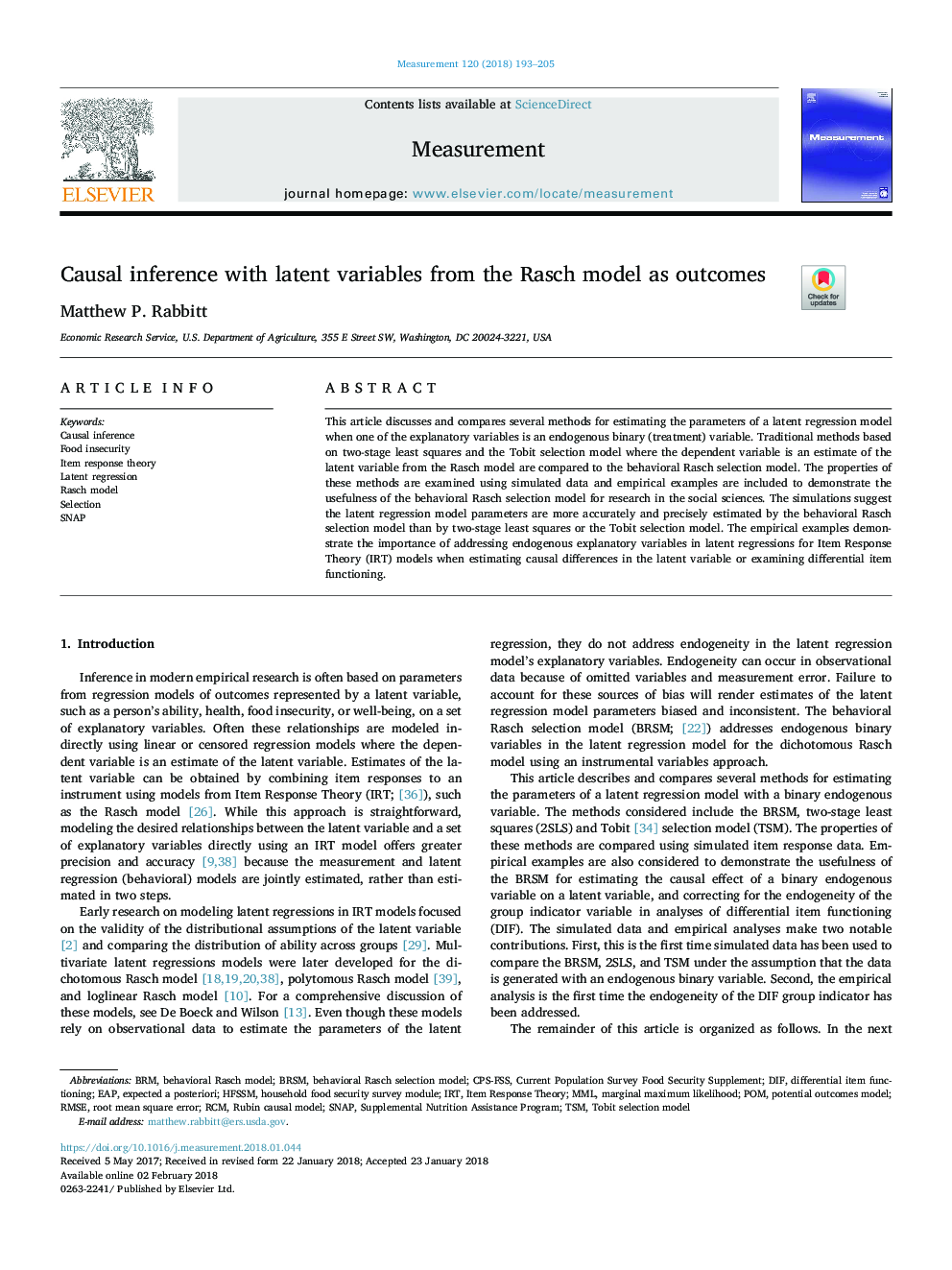| Article ID | Journal | Published Year | Pages | File Type |
|---|---|---|---|---|
| 7121547 | Measurement | 2018 | 13 Pages |
Abstract
This article discusses and compares several methods for estimating the parameters of a latent regression model when one of the explanatory variables is an endogenous binary (treatment) variable. Traditional methods based on two-stage least squares and the Tobit selection model where the dependent variable is an estimate of the latent variable from the Rasch model are compared to the behavioral Rasch selection model. The properties of these methods are examined using simulated data and empirical examples are included to demonstrate the usefulness of the behavioral Rasch selection model for research in the social sciences. The simulations suggest the latent regression model parameters are more accurately and precisely estimated by the behavioral Rasch selection model than by two-stage least squares or the Tobit selection model. The empirical examples demonstrate the importance of addressing endogenous explanatory variables in latent regressions for Item Response Theory (IRT) models when estimating causal differences in the latent variable or examining differential item functioning.
Keywords
Related Topics
Physical Sciences and Engineering
Engineering
Control and Systems Engineering
Authors
Matthew P. Rabbitt,
